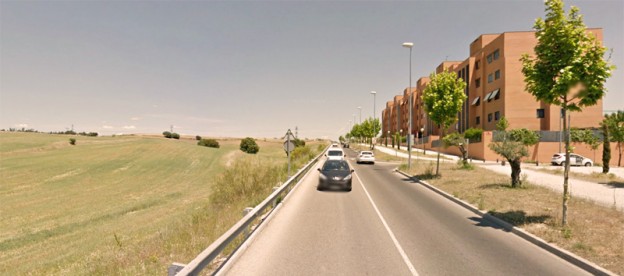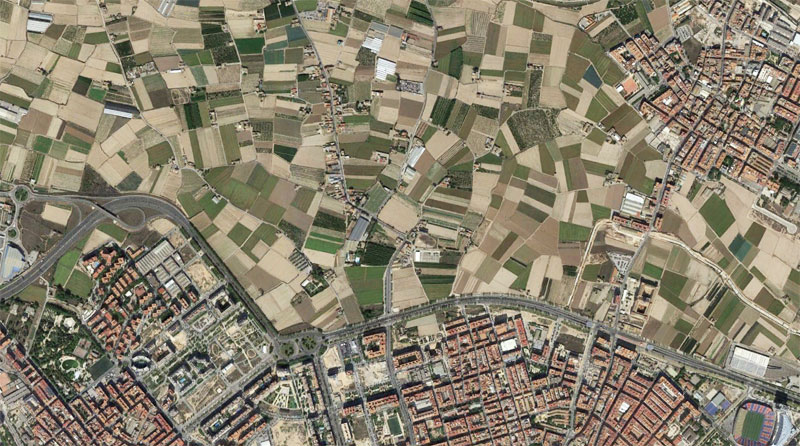
end of the city

Urban area of Santander, 2001

Urban area of Santander, 2010
Is it possible to control the cities’ urban growth and densify the urban fabric while keeping the quality of the public spaces and providing new services to the citizens? Yes, but only if the agricultural land that circles the european cities is preserved: in the western societies, with low population growth rates, there is no reason for this urban sprawl apart from the speculative housing market. The agricultural land, useful and valuable for both local food production and support of the ecological process between the city and its environment, is very vulnerable. The erosion of rocks has slowly created superficial layers of topsoil, through the simultaneous action of water, temperature and wind. After starting the chemical process for rock weathering, eroded sediments are naturally transformed into productive soils by small organic beings like little plants, microorganisms and earthworms.
Generally, this land is not protected and is expected to be transformed, except when some ecological, cultural or productive values make it unique and important for the society: land at the boundaries of a city is rather inexpensive and accessible, well connected to the inner urban fabric but more vulnerable to the urban transformations. At the same time, it provides the society with food and resources and is part of the development of a culture based on the exchange of products.

Vegetable gardens in Valencia
The agricultural belt has been essential in the cities’ success since their birth during the Neolithic –Çatalhöyük, in Anatolia-: it fed the cities of the old great civilizations –Emerita Augusta or Cuzco-, was essential for the new settlements founded by the global empires in the Modern Age –Lima-, and was one of the main elements in which the new Urbanism developed by the utopians -Saint-Simon, Fourier, Godin or Howard- was based to resolve the unhealthy conditions of the 19th century industrial cities –the garden city movement-. Today, the preservation of the agricultural land is one of the most important challenges that must be dealt with by a sustainable urban planning which focus on the territorial management: the agricultural belts and the green infrastructures are some of the tools that could make compatible the urban growth with the agricultural production, the leisure areas and the green tourism to assure the future and the dynamism of the city.